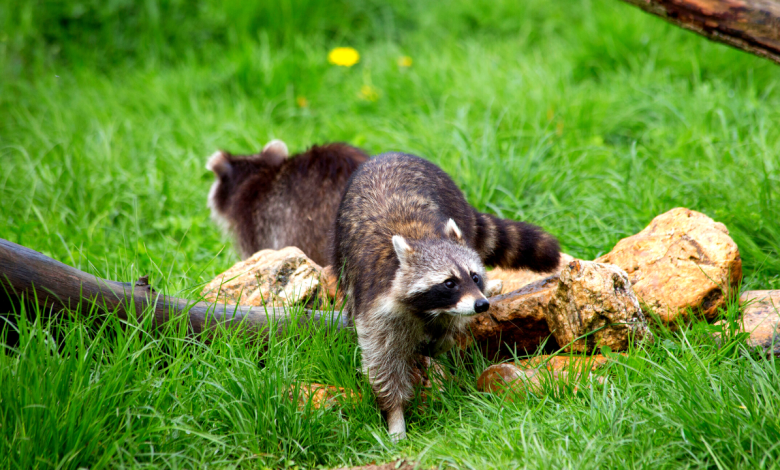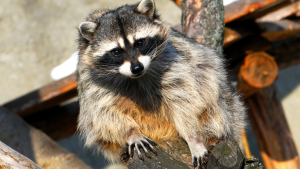
Raccoons are curious, intelligent animals that can adapt to their surroundings. This allows them to thrive in a variety of environments, including cities.
With such high population densities, one may expect the common raccoon to live a long time. They do, however, have one of the shortest life expectancies of any North American animal.
In the wild, a raccoon’s lifespan is only two to three years.
In this article, we’ll talk about how long raccoons live on average and what their life cycle looks like. These omnivores have a variety of interesting hobbies and lifestyles.
You’ve come to the perfect site if you’ve ever wanted to learn more about raccoons.
Raccoons’ Average Lifespan
The average raccoon lifespan varies greatly depending on whether they live in the wild or in captivity. Raccoons live short lives in the wild, and young raccoons frequently perish before they reach sexual maturity (1 year).
If they survive the first year, however, their odds of dying are greatly lowered. Raccoons in the wild typically live three to five years, although they can live up to 16 years.
Average Lifespan of Raccoons in Captivity
The longevity of a raccoon in captivity or as a domestic animal increases substantially. Captive raccoons can live for 13-20 years, if not longer, with correct care (dietary requirements), environment (enough area and climbing structures), and veterinary treatment.

This is because they have a much lower probability of being wounded or developing sickness than they would in the wild.
The Life Expectancy Of Baby Raccoons
Because they are fully reliant on their moms for food and protection, baby raccoons have a high death rate.
It’s possible that half of all baby raccoons will die in their first year. If their mother dies at this point, they have a slim chance of surviving.
The Life Cycle Of A Raccoon
The mating season, which lasts from February to March, is the beginning of a raccoon’s life cycle. Males leave their territories during this period to look for females who are ready to breed.
The female gives birth to between three and five kits after around two months of gestation (also known as cubs). If a female raccoon is unable to give birth during this time, she will enter estrus and give birth as late as June.
Raccoons are raised by their mothers for 2–4 months. Until they are older, she only leaves the den for short periods of time.
They teach their children how to survive throughout this period. They use foraging skills and climbing techniques to scavenge food and avoid predators.
The baby raccoons stay with their mother for one year before venturing out on their own in search of food or a mate.
Factors That Affect The Raccoons’ Lifespan
The lifespan of a raccoon is influenced by a variety of factors, including human interference, climate, predators, and diseases.
Human Intervention
Humans have had a considerable impact on raccoon lifespans, not only through killing but also through habitat destruction.
As cities grow, more wild raccoons make their way to the urban areas and human homes, businesses, and roadways, resulting in shorter lifespans as they encounter more threats than they would in the wild.
Raccoons are real nuisance in urban areas since they raid trash cans, knock them over, and build dens inside homes.
As a result, they are often target for the homeowners, which can result in their death or harm as a result of traps, poisoning, and other means.
Furthermore, because raccoons are nocturnal species, they regularly collide with vehicles while roaming at night in search of food on congested highways in metropolitan towns.
Climate Conditions
Raccoons have evolved to be able to withstand the winter, yet long and bitterly cold winters still pose a threat.

Due to the fact that raccoons are not real hibernators and must emerge from their den to collect food throughout the winter, scarce food sources and harsh temperatures can cause many raccoons to perish during the coldest months.
Prey availability is another important aspect of raccoon lifespan, as animals who are unable to hunt successfully owing to a shortage of food would not live very long.
Diseases
The most prevalent disease that kills raccoons is distemper. Raccoons’ respiratory, gastrointestinal, and neurological systems are all affected by this virus, which can cause paralysis or even famine if they are unable to find food on their own.
Other viral infections, including rabies, infectious canine hepatitis, raccoon parvoviral enteritis, and pseudorabies, are less common but still provide a danger.
Raccoons are also susceptible to bacterial infections such as leptospirosis, yersiniosis, tularemia, Q fever, listeriosis, and pasteurellosis, which increase their chance of death.
Parasitic diseases like Baylisascarisprocyonis (raccoon roundworm) and giardia infection can potentially shorten a raccoon’s lifetime. Trichinosis, mange mites (notorious for causing infected animals’ fur to come out), fleas and ticks, as well as ear mites, are all parasitic diseases that harm raccoons.
Predators
Adult raccoons have few predators other than people and other large mammals such as wolves or coyotes, both in widespread in the woodlands where raccoon also live.
However, consider also smaller potential threats such as hawks, owls, bobcats, and other predators that hunt raccoons when they are young and leave their den.
If they can’t get away from these predators quickly enough, they may live substantially shorter lives than planned.
Dangers Of DIY Removal
Raccoon removal from a home or company should not be attempted by an untrained individual.
Raccoons are known to contain diseases that can be spread to humans and pets, so doing so without the right permissions and training may be banned in your area.
One of the main reasons for this is that it can be difficult to tell if a raccoon has rabies; while some cases are obvious, many others do not, which means that attempting to remove or relocate them yourself puts you and any other people or animals who come into contact with them in danger until they have been properly tested by a veterinarian.
They can also become aggressive when cornered or when their young are endangered, scratching or biting, which can spread diseases including rabies, leptospirosis, and raccoon roundworm.
Raccoons’ Humane Removal
To minimize these risks, engage a professional wildlife removal firm with experience and competence in removing or relocating any wild animals. Whether they’re on the roof, beneath the deck, within attics, or anywhere else, professionals can always help.
Conclusion
We hope you found this article about how long raccoons live and what factors influence their lifespan interesting and informative.
However, keep in mind that sickness, malnutrition, predators, or human interference can kill up to 50 percent of raccoons in their first year.
Please let us know about your thoughts and experiences!